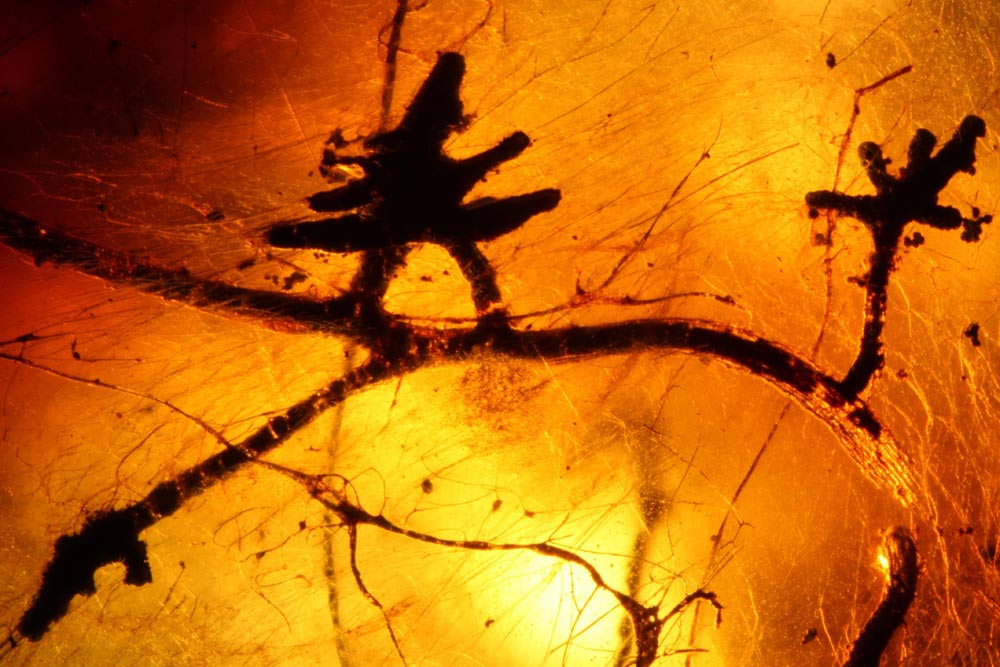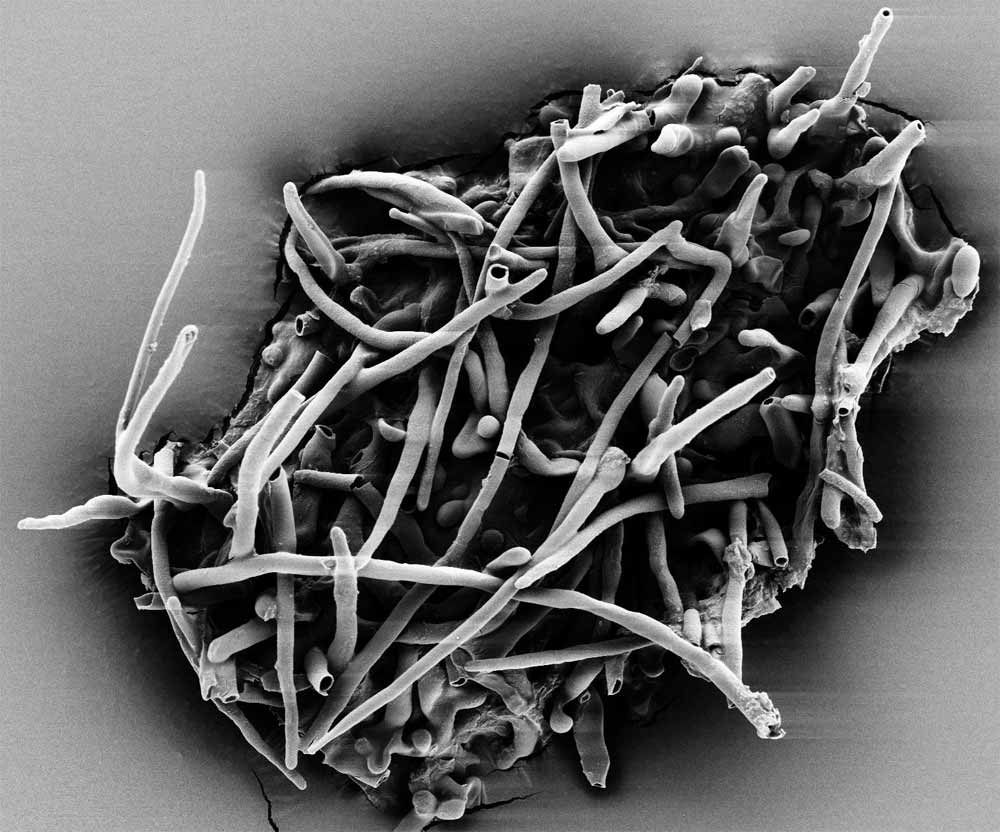Ancient Fungi-Plant Duo Discovered in Amber

A walnut-size piece of amber from 52-million years ago reveals what scientists say is the oldest, tight-knit partnership between a fungus and a tropical tree.
An international team of scientists from the United States, Germany and India discovered the rare fossil in the Tadkeshwar Lignite Mine of Gujarat State, western India.
Such symbiotic partnerships (which benefit both parties) as the one preserved inside amber, or plant resin, have made possible the survival of most land plants today, the researchers note. The fungi have threadlike cells that increase the surface area of the plant's roots, increasing the plant's access to necessary nutrients from the soil. In return, the fungus gets sugary foods that the plant produces. This fungus-plant root partnership is called a micorrhizal relationship.
"Mycorrhizal relationships are believed to have arisen more than 400-million years ago, as plants began to colonize terrestrial habitats," Paul Nascimbene, of the American Museum of Natural History's division of invertebrate zoology, said in a statement. "They are seen as a key innovation in the evolution of vascular plants."
The team analyzed the chemical makeup of the amber, comparing their results with pollen and fossil wood found in association with the amber. Their results suggest a member of the Dipterocarpaceae family, whose members include trees prevalent in Southeast Asia's rainforests today, produced the resin encompassing the fungi-root complex.
Their analysis also turned up melanin, a black pigment, in one of the mycorrhiza, marking the first time this pigment has been found in a fossil fungus or in amber, they said.
The fossil, which formed just 13-million years after the dinosaurs vanished, is detailed in the December issue of the journal New Phytologist. Follow LiveScience for the latest in science news and discoveries on Twitter @livescience and on Facebook.
Get the world’s most fascinating discoveries delivered straight to your inbox.




